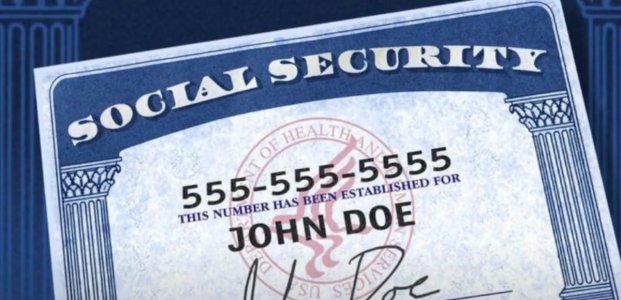Is your personal information being misused? How stolen identities are costing taxpayers billions
By
Veronica E.
- Replies 0
Most Americans work hard, pay their taxes, and trust that their money helps support their fellow Americans.
But behind the scenes, organized cybercriminals—some tied to foreign governments—are exploiting that trust by stealing billions of dollars from public benefit programs every year.
It may sound like something out of a spy novel, but the reality is much closer to home.
At The GrayVine, we believe that staying informed is the first step in staying protected.
Here's a closer look at how large-scale fraud is happening, what it means for everyday Americans, and how you can take simple steps to safeguard your identity and your benefits.

Billions lost: how modern fraudsters are targeting taxpayer funds
Fraud against the federal government is no longer limited to one-off scams or individual misconduct.
According to fraud expert Linda Miller, who spent 10 years with the Government Accountability Office and helped write the federal fraud-prevention rulebook, the losses are approaching $1 trillion a year.
She says the biggest threat isn’t individuals fudging forms—it’s foreign crime rings using stolen identities to exploit federal programs.
Miller describes the fraud networks as sophisticated operations, often state-backed, draining resources meant for Americans in need.
Also read: BEWARE: This fraud scheme could put your Social Security at risk
Pandemic programs opened the door
The COVID-19 pandemic created an unprecedented opportunity.
As emergency relief programs rolled out quickly and moved online, security measures couldn’t always keep up.
Miller said it was like they threw money in the air and just let people run around and grab it.
She estimates that more than $1 trillion in pandemic relief may have been stolen, making it the largest fraud-related loss in US history.
In one FBI case, cybercriminals stole $6 billion in unemployment benefits using stolen identities.
Much of this money ended up overseas, including in countries like China and Russia.
FBI cyber division head Bryan Vorndran said criminals used stolen information to submit fraudulent claims, laundered the money through shell companies, and sent it back to individuals in China.
Also read: Protect your Social Security now: Insider tips from US government on handling suspected fraud
How it works: behind the scenes of large-scale identity theft
The fraud techniques rely on stolen personal data, most of which is now widely available.
Vorndran explained that practically every American’s personal information—name, date of birth, Social Security number, and former addresses—is available on the darknet for purchase.
With that data, criminals create fake applications for unemployment, disaster relief, and tax refunds.
They use advanced tools like AI-generated deepfakes, synthetic identities, and fake emails and phone numbers to bypass fraud detection systems.
Once the funds are secured, they’re quickly laundered through complex networks.
Miller says fraud rings are constantly adjusting and looking for weaknesses, calling it a game of whack-a-mole.
Also read: Woman admits to $5M Department of Education fraud scheme involving “straw students”
Real people, real consequences
This type of fraud has real-life impacts.
When Rich and Deann Wilken lost their home in the Los Angeles wildfires, they applied for FEMA assistance—only to find that someone else had already accessed their account using their personal information.
They were told their FEMA account was locked due to suspected identity fraud.
Months later, they were still waiting for help.
Many others face similar problems, finding themselves blocked from unemployment, tax refunds, or disaster aid because their identity had already been used by someone else.
Also read: Elder fraud case: Personal assistant accused of stealing $10M—see the shocking thing she brought to court
What the government is doing—and where it falls short
To combat these issues, the Department of Government Efficiency—also known as DOGE—was created under President Donald Trump.
Its mission is to reduce waste, fraud, and abuse in federal programs.
DOGE has reported saving taxpayers over $150 billion so far, but some experts question how much of that directly addresses criminal fraud.
Miller says the real challenge is distinguishing between wasteful spending and true fraud—intentional deception for financial gain.
She also pointed out that disliking a particular government expenditure doesn’t make it fraud.
For example, she said, you may not want US dollars spent on foreign fertilizer, but that isn’t fraud under the law.
The Government Accountability Office estimates that annual fraud losses are at least $521 billion.
Miller and others believe the actual number is closer to $750 billion.
Miller added that this is something we should all agree on—bad actors should not be stealing American taxpayer dollars.
Protecting yourself from identity theft
While the government works to catch up, there are steps you can take now:
Cybercriminals are evolving, but so are the tools and strategies to fight back.
Being proactive and staying informed can go a long way in protecting your personal data—and your hard-earned benefits.
Read next: Phantom payments: Medicaid payments raise questions after millions spent on ineligible recipients

Have you or someone you know been affected by government benefit fraud or identity theft? Share your story in the comments—your experience could help others in the GrayVine community stay ahead of potential scams!
But behind the scenes, organized cybercriminals—some tied to foreign governments—are exploiting that trust by stealing billions of dollars from public benefit programs every year.
It may sound like something out of a spy novel, but the reality is much closer to home.
At The GrayVine, we believe that staying informed is the first step in staying protected.
Here's a closer look at how large-scale fraud is happening, what it means for everyday Americans, and how you can take simple steps to safeguard your identity and your benefits.

Fraud and identity theft continue to affect government programs, costing taxpayers billions each year. Image Source: YouTube / FOX 13 News Utah.
Billions lost: how modern fraudsters are targeting taxpayer funds
Fraud against the federal government is no longer limited to one-off scams or individual misconduct.
According to fraud expert Linda Miller, who spent 10 years with the Government Accountability Office and helped write the federal fraud-prevention rulebook, the losses are approaching $1 trillion a year.
She says the biggest threat isn’t individuals fudging forms—it’s foreign crime rings using stolen identities to exploit federal programs.
Miller describes the fraud networks as sophisticated operations, often state-backed, draining resources meant for Americans in need.
Also read: BEWARE: This fraud scheme could put your Social Security at risk
Pandemic programs opened the door
The COVID-19 pandemic created an unprecedented opportunity.
As emergency relief programs rolled out quickly and moved online, security measures couldn’t always keep up.
Miller said it was like they threw money in the air and just let people run around and grab it.
She estimates that more than $1 trillion in pandemic relief may have been stolen, making it the largest fraud-related loss in US history.
In one FBI case, cybercriminals stole $6 billion in unemployment benefits using stolen identities.
Much of this money ended up overseas, including in countries like China and Russia.
FBI cyber division head Bryan Vorndran said criminals used stolen information to submit fraudulent claims, laundered the money through shell companies, and sent it back to individuals in China.
Also read: Protect your Social Security now: Insider tips from US government on handling suspected fraud
How it works: behind the scenes of large-scale identity theft
The fraud techniques rely on stolen personal data, most of which is now widely available.
Vorndran explained that practically every American’s personal information—name, date of birth, Social Security number, and former addresses—is available on the darknet for purchase.
With that data, criminals create fake applications for unemployment, disaster relief, and tax refunds.
They use advanced tools like AI-generated deepfakes, synthetic identities, and fake emails and phone numbers to bypass fraud detection systems.
Once the funds are secured, they’re quickly laundered through complex networks.
Miller says fraud rings are constantly adjusting and looking for weaknesses, calling it a game of whack-a-mole.
Also read: Woman admits to $5M Department of Education fraud scheme involving “straw students”
Real people, real consequences
This type of fraud has real-life impacts.
When Rich and Deann Wilken lost their home in the Los Angeles wildfires, they applied for FEMA assistance—only to find that someone else had already accessed their account using their personal information.
They were told their FEMA account was locked due to suspected identity fraud.
Months later, they were still waiting for help.
Many others face similar problems, finding themselves blocked from unemployment, tax refunds, or disaster aid because their identity had already been used by someone else.
Also read: Elder fraud case: Personal assistant accused of stealing $10M—see the shocking thing she brought to court
What the government is doing—and where it falls short
To combat these issues, the Department of Government Efficiency—also known as DOGE—was created under President Donald Trump.
Its mission is to reduce waste, fraud, and abuse in federal programs.
DOGE has reported saving taxpayers over $150 billion so far, but some experts question how much of that directly addresses criminal fraud.
Miller says the real challenge is distinguishing between wasteful spending and true fraud—intentional deception for financial gain.
She also pointed out that disliking a particular government expenditure doesn’t make it fraud.
For example, she said, you may not want US dollars spent on foreign fertilizer, but that isn’t fraud under the law.
The Government Accountability Office estimates that annual fraud losses are at least $521 billion.
Miller and others believe the actual number is closer to $750 billion.
Miller added that this is something we should all agree on—bad actors should not be stealing American taxpayer dollars.
Protecting yourself from identity theft
While the government works to catch up, there are steps you can take now:
- Check your credit report regularly for unfamiliar activity
- Freeze your credit if you don’t plan to open new lines
- Use strong, unique passwords and consider a password manager
- Be cautious of phishing scams or suspicious links
- Report suspected fraud to the FTC and the relevant agency as soon as possible
Cybercriminals are evolving, but so are the tools and strategies to fight back.
Being proactive and staying informed can go a long way in protecting your personal data—and your hard-earned benefits.
Read next: Phantom payments: Medicaid payments raise questions after millions spent on ineligible recipients
Key Takeaways
- The federal government is losing close to $1 trillion each year to fraud, much of it driven by transnational crime rings and nation-state actors rather than small-scale schemes.
- Criminals often use stolen American identities to falsely claim government benefits, with fraud increasing dramatically during the COVID-19 pandemic.
- Techniques include deepfake technology, synthetic identities, and large-scale laundering networks that target unemployment, disaster assistance, and tax refunds.
- The Department of Government Efficiency (DOGE), created under President Trump, is attempting to reduce fraud, but experts warn that stronger prevention is needed to stop evolving cybercrime.
Have you or someone you know been affected by government benefit fraud or identity theft? Share your story in the comments—your experience could help others in the GrayVine community stay ahead of potential scams!






